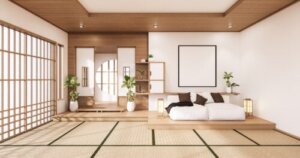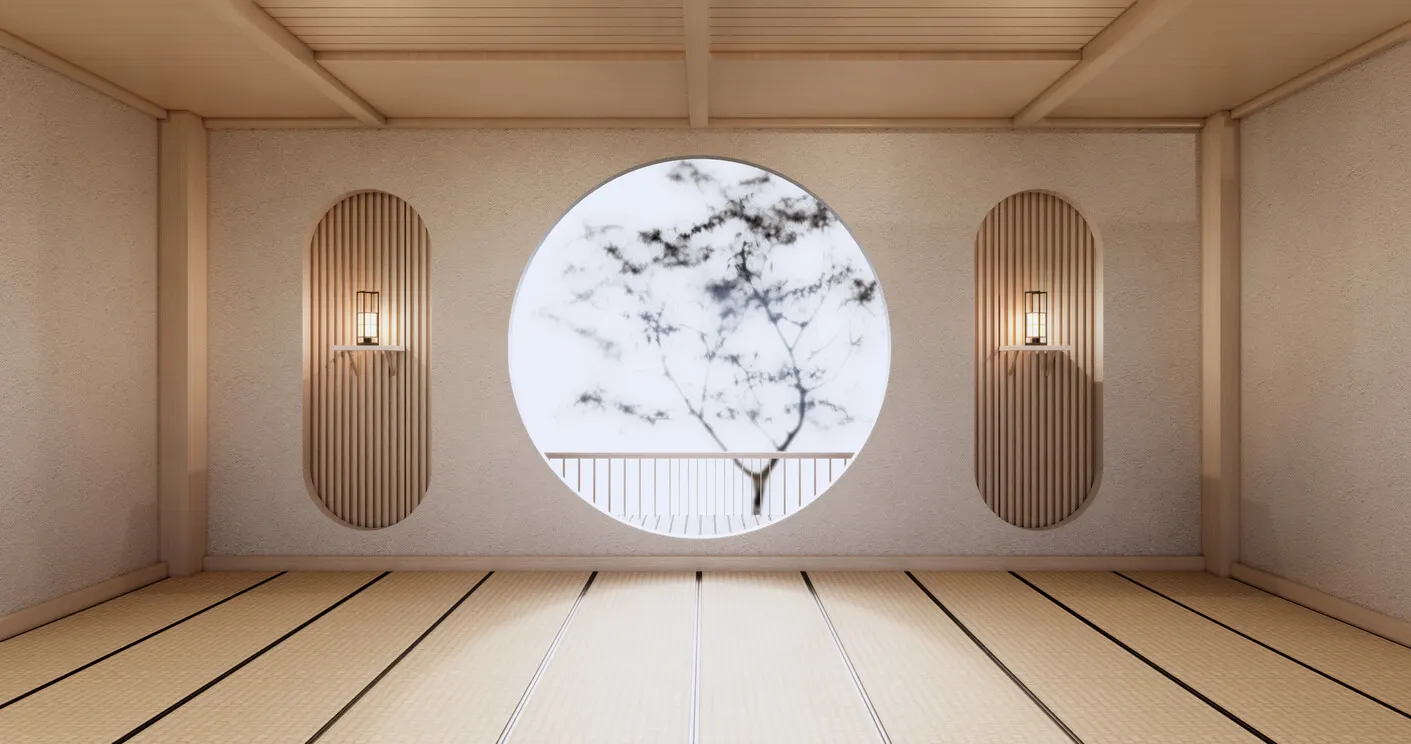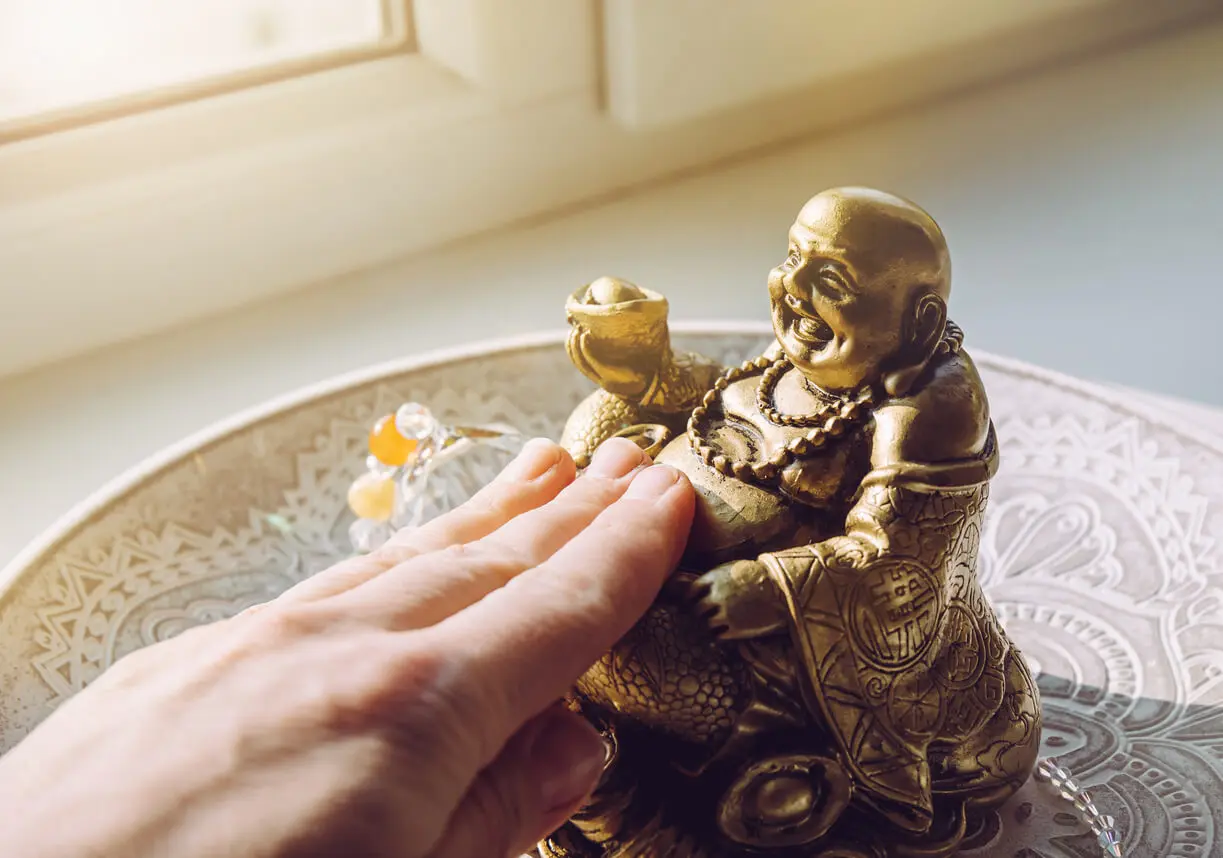10 Oriental Decorating Tips that You Can Apply in Your Home

In stores, houses, apartments, and in many other places, we often see elements of oriental decoration. This is a very fashionable trend nowadays, in which motifs inspired by different Asian cultures are used.
Buddha statues, Chinese vases and porcelain, globe-shaped lamps, and dividing screens combine to help convey an idea of serenity and tranquility, taking into account some of the principles of feng shui.
If you want to achieve this exotic and captivating effect, read on and learn about our easy and practical oriental decorating tips that you can apply in your home.
What is oriental decoration like?
When we talk about “oriental decoration”, the term may seem a bit vague, because it encompasses a great diversity of cultures. On the one hand, there are the countries of Arab influence, in what is known as the Middle East; then, India; but in the Far East, China and Japan predominate.
Without detracting from the others, it’s the latter countries that most inspire the trend we are talking about. Above all, they take into account some of the principles of feng shui for interior design.
However, there’s a lot of variety within the field of oriental decoration. With this in mind, let’s see some of its characteristics that have been adapted to the West:
- Several styles can be merged or united.
- The goal is to create harmony and tranquility and invite relaxation.
- Contrasts can be observed between elements with cold tones and warm colors.
- It involves the decorative use of elements with symbolic value or even spiritual meaning.
- In some cases, there’s a tendency towards minimalism, although in others there is a greater abundance of elements.
The best oriental decorating tips for your home
To have an oriental decoration, you should not only think about incorporating Chinese or Japanese motifs. You must take into account certain principles in terms of furniture, colors, and overall harmony of space.
1. Sobriety and balance
In oriental decor, the goal is to seek a harmonious interior. This doesn’t necessarily mean being minimalist, but excesses in terms of ornaments should be avoided.
It’s necessary to go for sobriety and balance. It’s important to bear in mind the distribution of your furniture and elements in order to maintain a healthy visual weight. To do this, it’s necessary to play with shapes, sizes, and tones.
Of course, this doesn’t always mean to be rigorously symmetrical, but it does mean to be orderly. Everything should have its place while bearing in mind functionality as well as aesthetics.

2. Use natural elements
On the one hand, the use of natural rather than synthetic materials is recommended. That is, no plastic, but instead incorporate furniture made of stone, wood, rice paper, silk, or bamboo.
These have a symbolic value of connection with the earth. In addition, they offer a variety of possibilities to achieve different effects in the spaces, as they harmonize very well with each other.
Moreover, a small water fountain or other auditory pieces (sound of a waterfall, breeze) can be added, as well as fragrances, to have the feeling that we are immersed in nature.
Like this article? You may also like to read: The Chinese Orange Tree or Kumquat: An Ideal Tree to Decorate Your Home
3. Soft tones with vivid touches
Following the previous point, oriental decoration uses tones from nature, especially soft tones, such as beige and brown, reminiscent of sand or logs. Sometimes green, associated with vegetation.
It’s also usual to use white on walls or furniture. But touches of more vivid and bright colors, such as red and orange, can be applied for contrast. Gold and bronze are very characteristic in vases or statues.
4. Lighting
The lighting is diffuse, tending to prefer natural light. For this purpose, it’s recommended to place rice paper panels.
This effect is also sought with lamps, to create an atmosphere of greater intimacy. A characteristic element of oriental decoration is the balloon-type lampshades, made of bamboo and paper.
5. Low furniture
Lower furniture is generally preferred, compared to Western use. The seat of a typical sofa is about 60 centimeters, while an Arab majli is only 15 centimeters off the ground.
Of course, coffee tables should be of a proportional height. And since the furniture is not very large, this contributes to the impression that the spaces look wider.
Similarly, low beds are used in the bedroom, sometimes consisting only of a mat or matting on the floor. Although it’s said that it’s not very good to sleep on the floor when it comes to back and neck health.
The furniture should be made of wood (cedar or teak). Straight lines tend to be more visible, as well as heavily varnished surfaces. A silk cushion should not be missing.
6. Carpets and tatamis
The carpets used in oriental decoration are in tune with the sober character. In other words, Persian or Turkish designs are rejected. Rather, minimalist designs are preferred, with a single tone, in beige or earth tones. Likewise, tatamis are used in the living room, dining room, or bedroom.
7. Sliding doors
Sliding doors, like the ones we see in the movies, are called shoji. They have the particularity that they not only help to save space but also filter the light, creating a comfortable atmosphere. They are made of wood and rice paper.
8. Oriental decorating tips: A Zen garden
An oriental decoration is incomplete without a Zen garden. Made with sand, gravel, and stones, they constitute an ideal space for meditation and philosophical reflection.
If you don’t have the space for a full-size one, it’s possible to acquire a miniature one. Thus, it serves as a decorative element.
9. Ornaments and decorative complements
And we cannot fail to mention the ornaments to complement the oriental decoration, some of which are typical of the symbology of traditional Japanese houses. Among the most commonly used are the following:
- Vases: There are many different types, such as those white and blue in the style of the Ming dynasty; or the beautiful satsuma, with a predominance of gold.
- Paintings and tapestries with the same or other motifs, including Chinese ideograms, yin and yang, or the trigrams of the I-Ching.
- Small statues: this may be of Buddha, samurai, geisha, miniature pagodas, or the little cat that moves its paw (maneki neko).
- Lamps, candlesticks, and incense burners.

10. Oriental decorating tips: Other ideas and recommendations
When it comes to oriental decoration, there are many different styles. Therefore, we can lean toward one of them or prefer distinctive elements of one culture over the other:
- Japanese style is more minimalist.
- Chinese style usually has lots of red and bright yellow.
- Arabic-style decor has am ore geometric tendency.
- Hindu style is quite colorful.
We think you may be interested in reading this, too: 9 Techniques to Decorate Your Home Like an Expert
The Far East at home
Decorating in an oriental style can be as simple as placing a tapestry, some porcelain, and some panels; that is to say, you don’t need to overload your space with objects. Rather, this is a trend that, while still exotic, is a bit closer to minimalism.
On the other hand, if you can’t or don’t want to modify the whole house, it’s possible to set up a small room for tea. You include a low table and some beautiful teapots and cups. Don’t forget a rug at the entrance, it’s a custom in most oriental cultures to take off your shoes to enter the room.
All cited sources were thoroughly reviewed by our team to ensure their quality, reliability, currency, and validity. The bibliography of this article was considered reliable and of academic or scientific accuracy.
- Álvarez, J. (2008). Feng Shui: El Arte del diseño: creando armonía en el espacio y en el tiempo. Buenos Aires – Argentina, Ed. Kier.
- Evraud, M., & Le Hardy, S. (2006). Cómo aplicar el Feng Shui: Claves para el hogar, el jardín, el trabajo, el amor y la amistad. Barcelona – España, Ed. Amat.
- Falqui, R. (2014). La simbologia negli interni delle case giapponesi tradizionali (Tesis de maestría). Universidad Politécnica, Valencia – España.
- Lianhui, L., Shan, W., Jin, R. & Ding, X. (2022). Chinese decorative color based on improved AlexNet in interior decoration design. Hindawi. https://doi.org/10.1155/2022/2358905.
- McGovern, S. (2016). The Ryôan-Ji zen garden: textual meanings in topographical form view all authors and affiliations. SAGE Journals, Volume 3(3). https://doi.org/10.1177/1470357204045787
- Van Tonder, G., Lyons, M. & Ejima, Y. (2002). Visual structure of a Japanese Zen garden. Nature vol. 419, pp. 359–360.
This text is provided for informational purposes only and does not replace consultation with a professional. If in doubt, consult your specialist.








